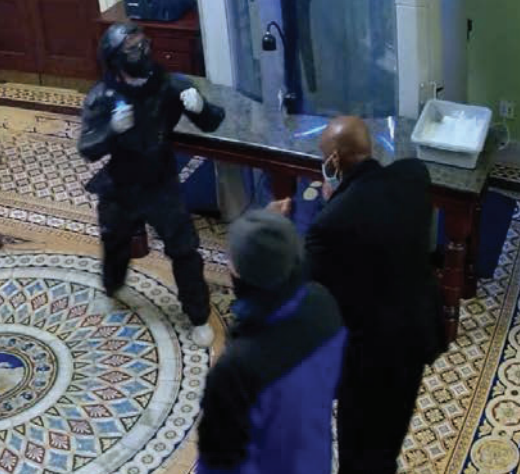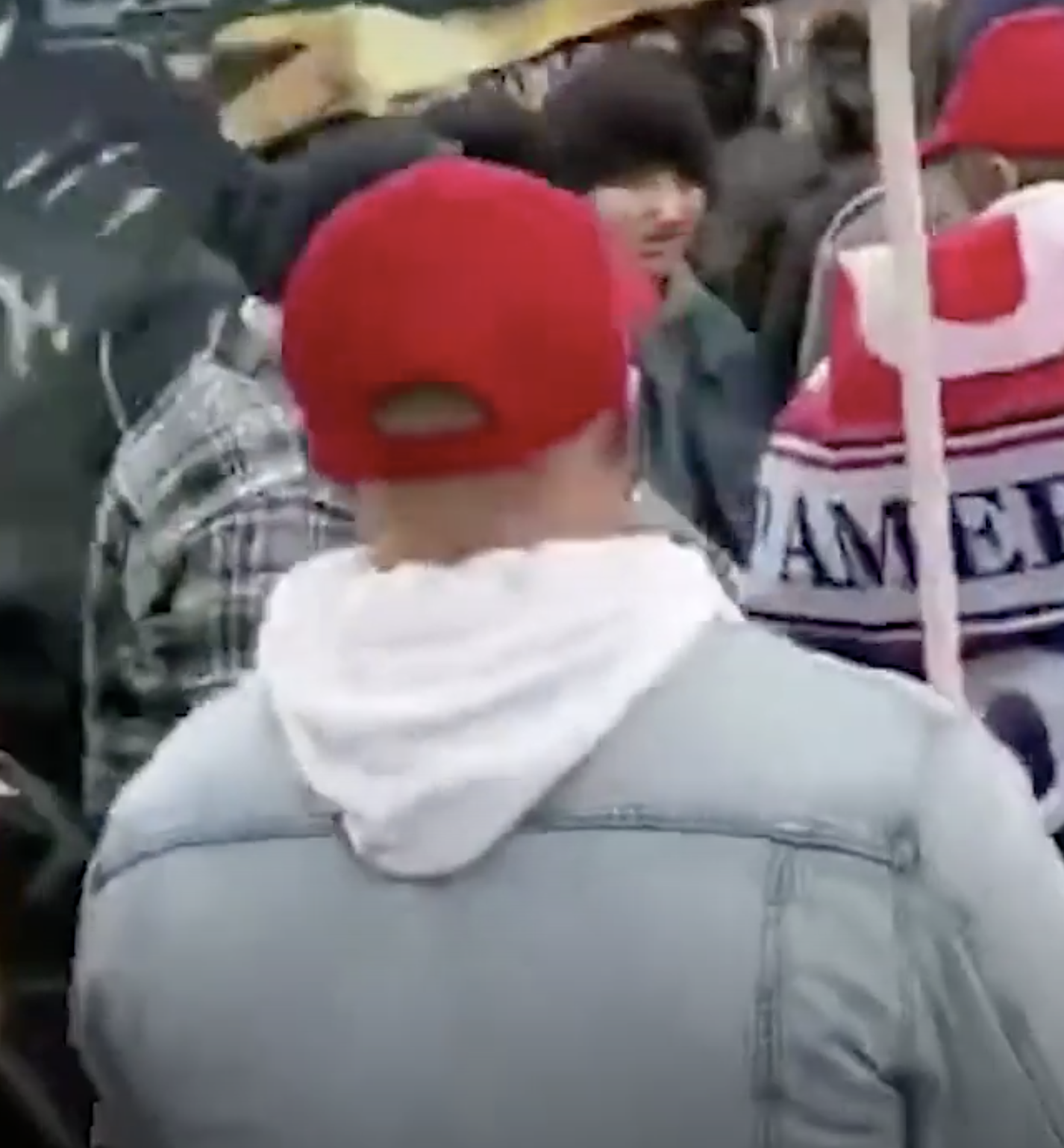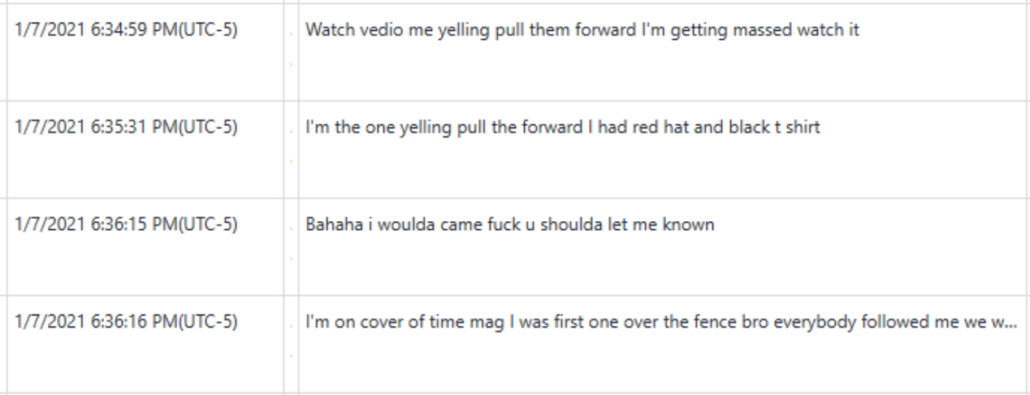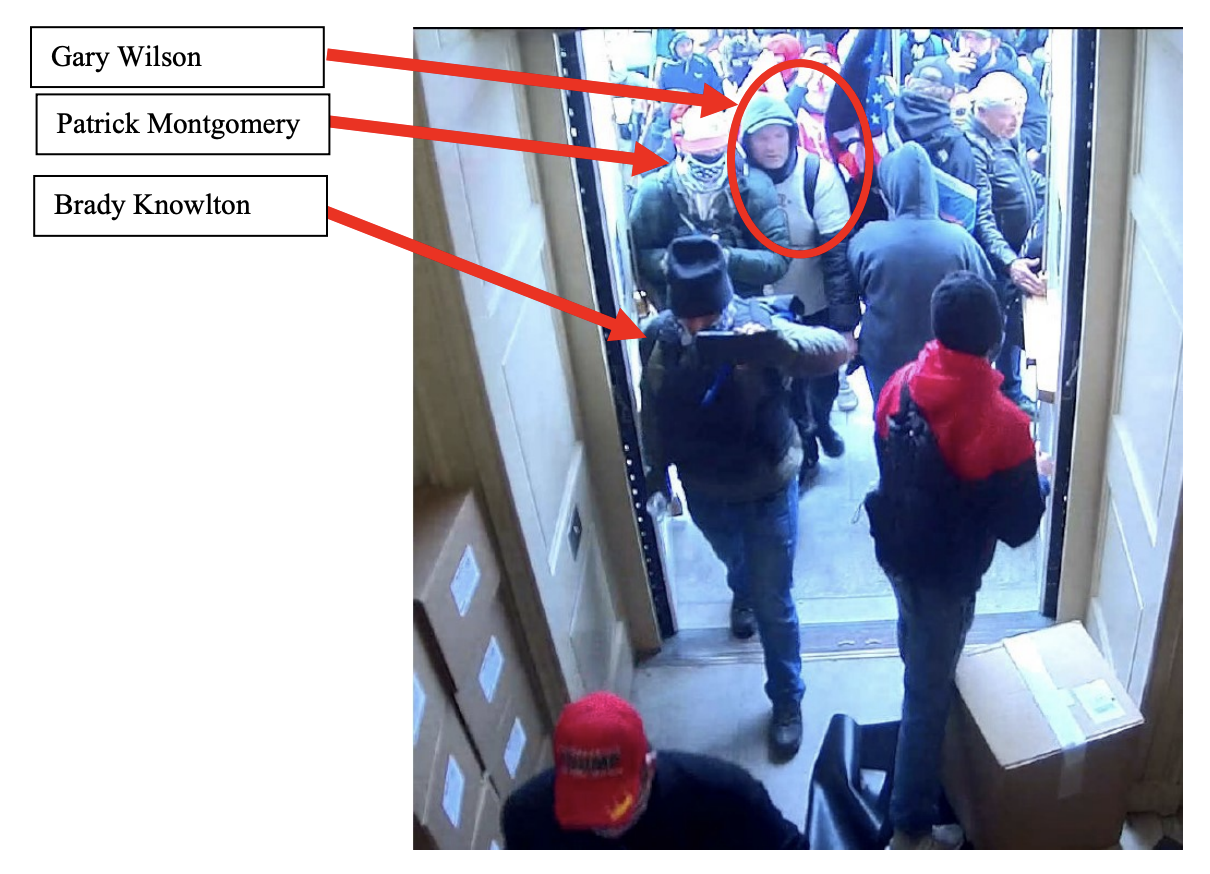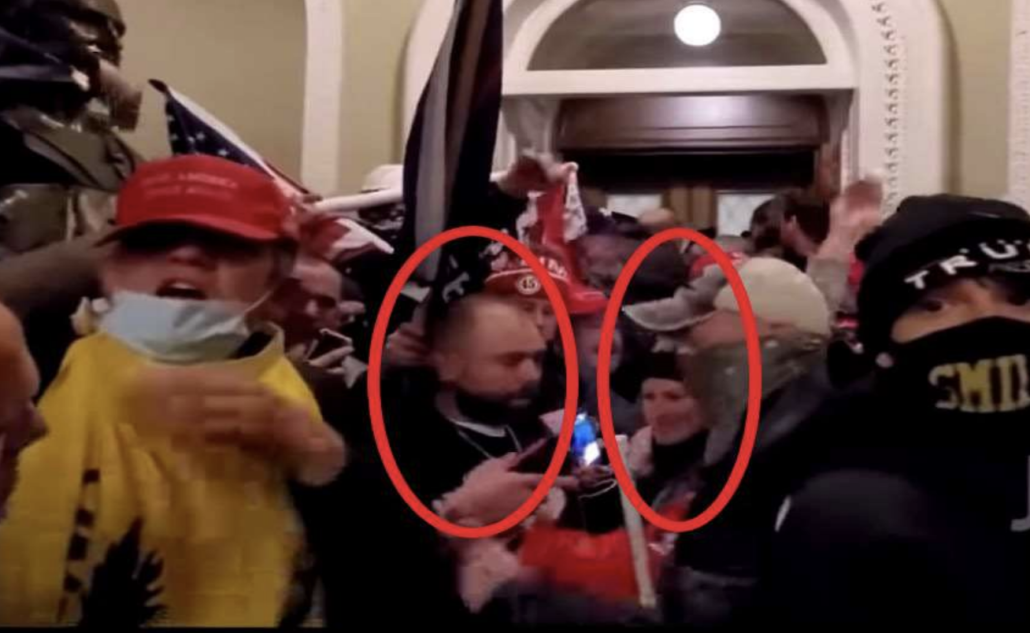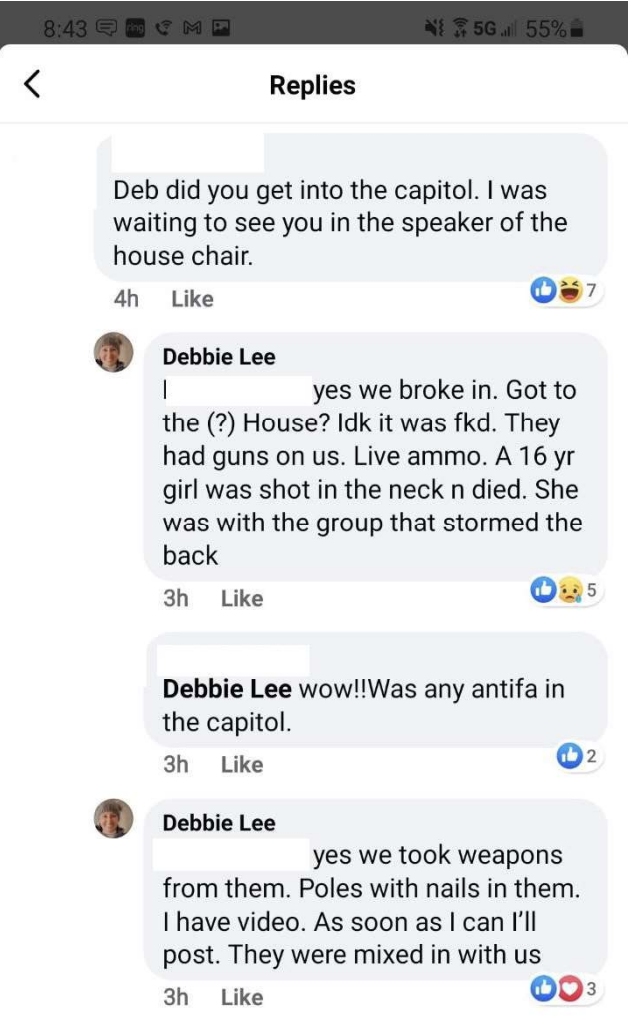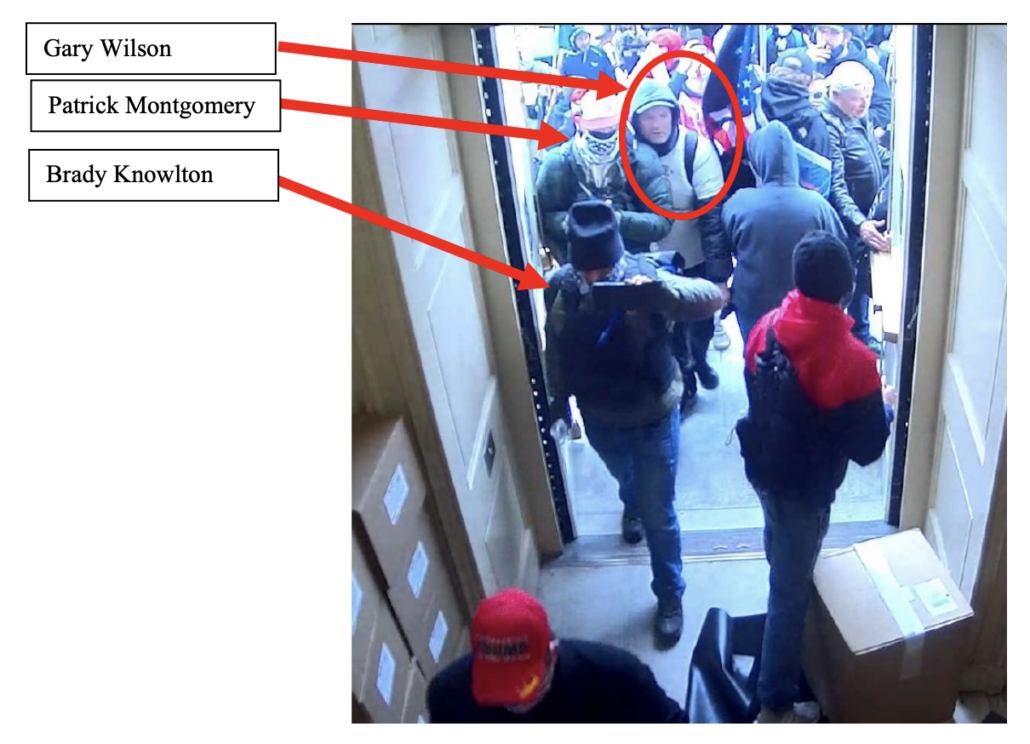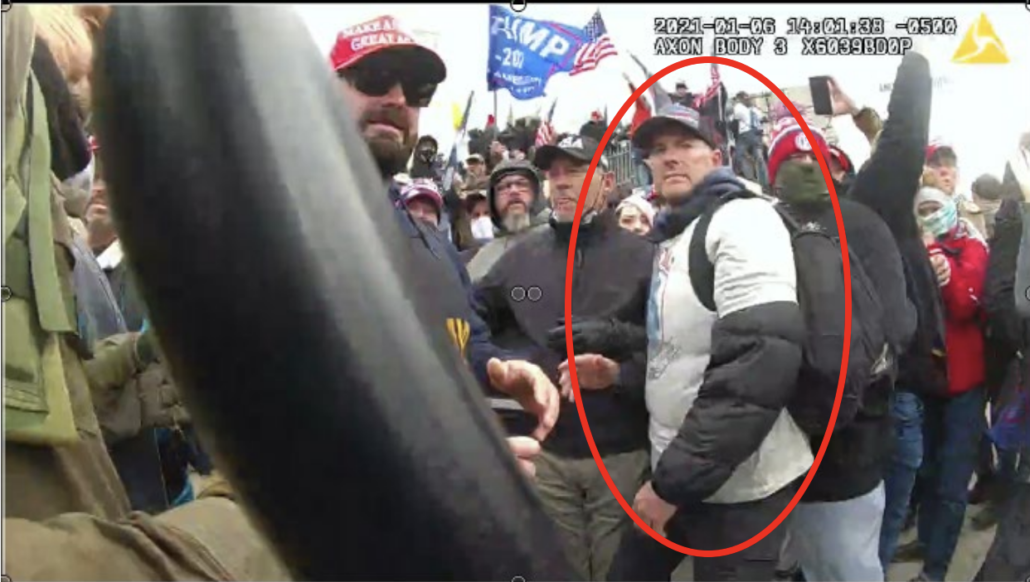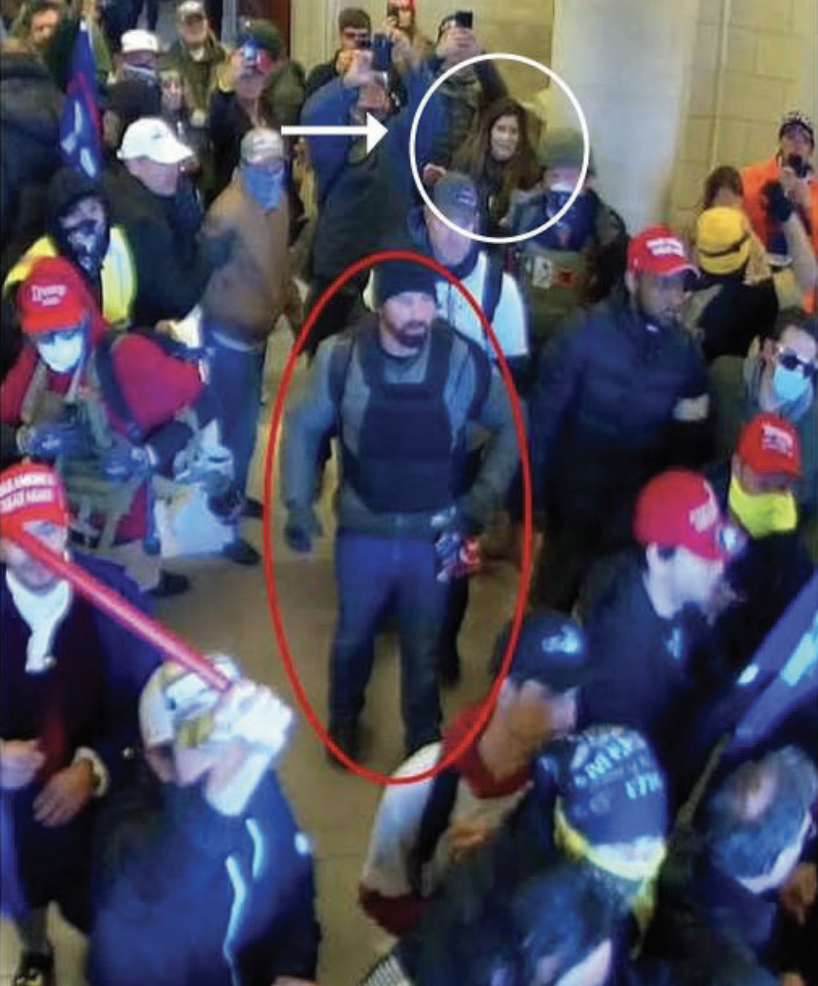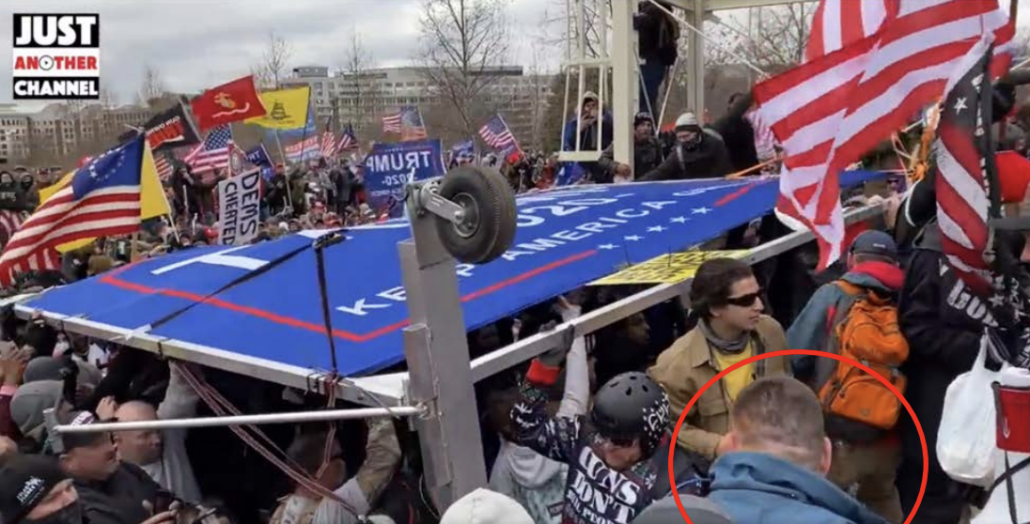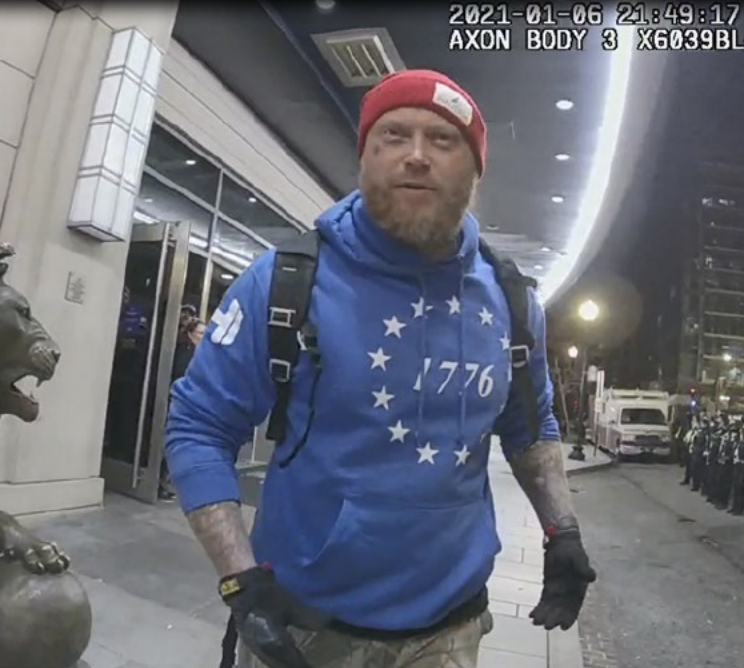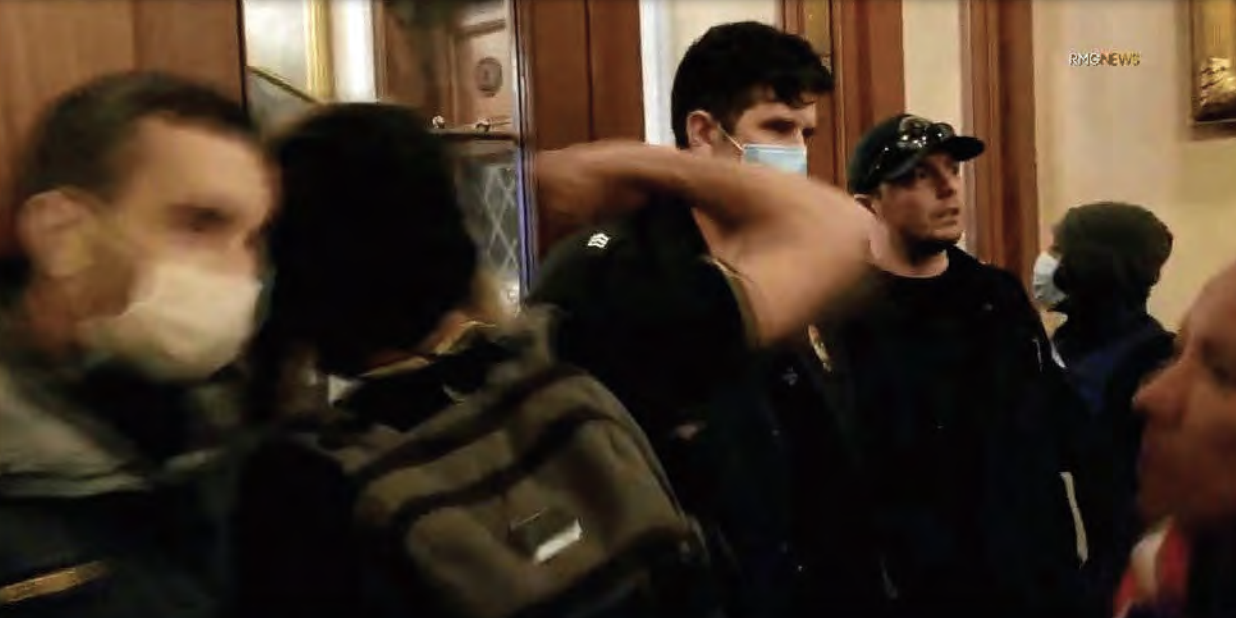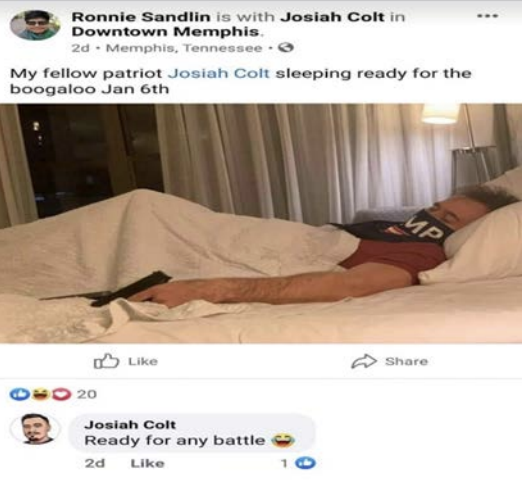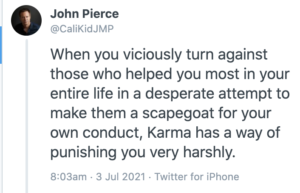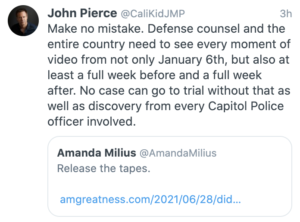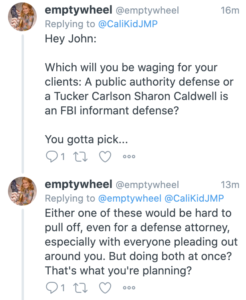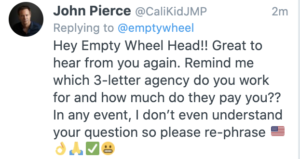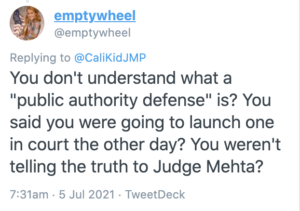Baloney and Blackjack! A John Pierce Client Complains of Paying Too Much for What Had Been Free
It’s time to check in with John Pierce’s accumulation of January 6 clients.
The other day, the attorney who got fired by Kyle Rittenhouse apparently swapped family members to expand his docket. Pierce withdrew from the case of Jonah Westbury, who is charged, by himself, with trespassing. At virtually the same time, Pierce was making his first appearance in the case of Isaac and Robert Westbury and Aaron James, replacing lawyers for all three. Isaac Westbury and Aaron James are charged with civil disorder and assault, and all three are charged with trespassing. When Rudolph Contreras was sorting all this out a status hearing, Pierce explained, “ I think we’re up to 21, your honor!!!,” like a kid who has gotten his first 21 in blackjack. (h/t MK for the observation) Though unless not all his clients are noticed on the docket, he’s at 20 as of November 1.
Here are those 20, along with the clients who dropped him along the way:
Christopher Worrell: Christopher Worrell is a Proud Boy from Florida arrested on March 12. Worrell traveled to DC for the December MAGA protest, where he engaged in confrontational behavior targeting a journalist. He and his girlfriend traveled to DC for January 6 in vans full of Proud Boys paid for by someone else. He was filmed spraying pepper spray at cops during a key confrontation before the police line broke down and the initial assault surged past. Worrell was originally charged for obstruction and trespassing, but later indicted for assault and civil disorder and trespassing (dropping the obstruction charge). He was deemed a danger, in part, because of a 2009 arrest for impersonating a cop involving “intimidating conduct towards a total stranger in service of taking the law into his own hands.” Pierce first attempted to file a notice of appearance on March 18. Robert Jenkins (along with John Kelly, from Pierce’s firm) is co-counsel on the case. Since Pierce joined the team, he has indulged Worrell’s claims that he should not be punished for assaulting a cop, but neither that indulgence nor a focus on Worrell’s non-Hodgkins lymphoma nor an appeal succeeded at winning his client release from pre-trial detention. While Pierce was hospitalized with COVID, Pierce submitted some filings attempting to get Worrell out of jail because he’s not getting medical care; the most recent filing not only thrice misstated what jail Worrell is in, but also admitted he has refused treatment at least five times. On September 24, Alex Stavrou replaced Pierce, and almost immediately found success that Pierce had lacked in getting Judge Royce Lamberth to believe that Worrell is not getting adequate medical treatment in the DC jail.
1. William Pepe: William Pepe is a Proud Boy charged in a conspiracy with Dominic Pezzola and Matthew Greene for breaching the initial lines of defense and, ultimately, the first broken window of the Capitol. Pepe was originally arrested on January 11, though is out on bail. Pierce joined Robert Jenkins on William Pepe’s defense team on March 25. By April, Pierce was planning on filing some non-frivolous motions (to sever his case from Pezzola, to move it out of DC, and to dismiss the obstruction count), but not much has happened since.
2. Paul Rae: Rae is another of Pierce’s Proud Boy defendants and his initial complaint suggested Rae could have been (and could still be) added to the conspiracy indictments against the Proud Boys already charged. He was indicted along with Arthur Jackman for obstruction and trespassing; both tailed Joe Biggs on January 6, entering the building from the East side after the initial breach. Pierce filed to join Robert Jenkins in defending Rae on March 30.
3. Stephanie Baez: On June 9, Pierce filed his appearance for Stephanie Baez. Pierce’s interest in Baez’ case makes a lot of sense. Baez, who was arrested on trespassing charges on June 4, seems to have treated the January 6 insurrection as an opportunity to shop for her own Proud Boy boyfriend. Plus, she’s attractive, unrepentant, and willing to claim there was no violence on January 6. Baez was formally charged with trespassing on August 4.
Victoria White: White was detained briefly on January 6 then released, and then arrested on April 8 on civil disorder and trespassing charges. At one point on January 6, she was filmed trying to dissuade other rioters from breaking windows, but then she was filmed close to and then in the Tunnel cheering on some of the worst assault. Pierce filed his notice of appearance in White’s case on June 10. On September 3, while Pierce was in the hospital with COVID, White told Judge Faruqui she didn’t want Pierce to represent her anymore.
Ryan Samsel: After consulting with Joe Biggs, Ryan Samsel kicked off the riot by approaching the first barriers and — with several other defendants — knocking over a female cop, giving her a concussion. He was arrested on January 30 and is still being held on his original complaint charging him with assault and civil disorder. He’s obviously a key piece to the investigation and for some time it appeared the government might have been trying to persuade him that the way to minimize his significant exposure (he has an extensive criminal record) would be to cooperate against people like Biggs. But then he was brutally assaulted in jail. Detainees have claimed a guard did it, and given that Samsel injured a cop, that wouldn’t be unheard of. But Samsel seemed to say in a recent hearing that the FBI had concluded it was another detainee. In any case, the assault set off a feeding frenzy among trial attorneys seeking to get a piece of what they imagine will be a huge lawsuit against BOP (as it should be if a guard really did assault him). Samsel is now focused on getting medical care for eye and arm injuries arising from the assault. And if a guard did do this, then it would be a key part of any story Pierce wanted to tell. After that feeding frenzy passed, Pierce filed an appearance on June 14, with Magistrate Judge Zia Faruqui releasing his prior counsel on June 25. Samsel is a perfect defendant for Pierce, though (like Rittenhouse), the man badly needs a serious defense attorney. On July 27, Samsel informed Magistrate Judge Zia Faruqui that he would be retaining new counsel.
4. James McGrew: McGrew was arrested on May 28 for assault, civil disorder, obstruction, and trespassing, largely for some fighting with cops inside the Rotunda. His arrest documents show no ties to militias, though his arrest affidavit did reference a 2012 booking photo, he has some drug-related crimes, and he violated probation in the period before he was arrested. Pierce filed his appearance to represent McGrew on June 16, and he’s currently trying to get McGrew bailed by arguing he wasn’t assaulting cops, he was looking for his mother. Update: Chief Judge Howell denied the effort to reopen detention fairly resoundingly.
Alan Hostetter: John Pierce filed as Hostetter’s attorney on June 24, not long after Hostetter was indicted with five other Three Percenters in a conspiracy indictment paralleling those charging the Oath Keepers and Proud Boys. Hostetter was also active in Southern California’s anti-mask activist community, a key network of January 6 participants. Hostetter and his defendants spoke more explicitly about bringing arms to the riot, and his co-defendant Russell Taylor spoke at the January 5 rally. On August 3, even before Pierce’s bout with COVID halted his relentless acquisition of new Jan 6 clients, Hostetter replaced Pierce, and Hostetter has since gotten permission to represent himself.
5, 6, 7. On June 30, Pierce filed to represent David Lesperance, and James and Casey Cusick. As I laid out here, the FBI arrested the Cusicks, a father and son that run a church, largely via information obtained from Lesperance, their parishioner. They were originally separately charged (Lesperance, James Cusick, Casey Cusick), all with just trespassing, but have since been joined in one case. The night before the riot, father and son posed in front of the Trump Hotel with a fourth person besides Lesperance (though Lesperance likely took the photo).
Kenneth Harrelson: On July 1, Pierce filed a notice of appearance for Harrelson, who was first arrested on March 10. Leading up to January 6, Harrelson played a key role in Oath Keepers’ organizing in Florida, particularly meetings organized on GoToMeeting. On the day of the riot, Kelly Meggs had put him in charge of coordinating with state teams. Harrelson was on the East steps of the Capitol with Jason Dolan during the riot, as if waiting for the door to open and The Stack to arrive; with whom he entered the Capitol. With Meggs, Harrelson moved first towards the Senate, then towards Nancy Pelosi’s office. When the FBI searched his house upon his arrest, they found an AR-15 and a handgun, as well as a go-bag with a semi-automatic handgun and survivalist books, including Ted Kaczynski’s writings. Harrelson attempted to delete a slew of his Signal texts, including a video he sent Meggs showing the breach of the East door. Pierce attempted to get Harrelson out on bail by joining in the bail motion of one of his co-defendants, which may either show how little he knows about defense work or how little he cares. On October 8, Harrelson replaced Pierce with Brad Geyer, and anti-vaxxer who just got slapped down by Amit Mehta for trying to make this case about that, instead of attacking democracy.
MINUTE ORDER denying Defendant KENNETH HARRELSON (10) and KELLY MEGGS’s (8) [476] Motion for Enlargement of Page Limit. Whatever motion Defendants intend to file, the court will stop reading it after page 45. See LCrR 47(e). The court will not allow this case to become a forum for bombastic arguments (“SCOTUS Could Not Have Foreseen the Holocaust,” see ECF No. 476-2, at 1) or propagating fringe views about COVID-19 or vaccinations (“A Human Experiment Unlike Any Other,” “Pseudo-Science Displaces Science,” “Mandatory Everything,” “C19 Conspiracy Structure,” see ECF No. 476-2, at 2). To this court’s knowledge, the D.C. Department of Corrections does not require any person held there to accept a COVID-19 vaccine. If that is the intended basis of Defendants’ motion, they must file a brief of no more than five pages (excluding exhibits) establishing such a mandatory policy before the court will accept a longer filing. Signed by Judge Amit P. Mehta on 11/01/2021.
8. Leo Brent Bozell IV: It was, perhaps, predictable that Pierce would add Bozell to his stable of defendants. “Zeeker” Bozell is the scion of a right wing movement family including his father who has made a killing by attacking the so-called liberal media, and his grandfather, who was a speech writer for Joseph McCarthy. Because Bozell was released on personal recognizance there are details of his actions on January 6 that remain unexplained. But he made it to the Senate chamber, and while there, made efforts to prevent CSPAN cameras from continuing to record the proceedings. He was originally arrested on obstruction and trespassing charges on February 12; his indictment added an abetting the destruction of government property charge, the likes of which have been used to threaten a terrorism enhancement against militia members. Pierce joined Bozell’s defense team (thus far it seems David B. Deitch will remain on the team) on July 6.
9. Nate DeGrave: DeGrave is part of what I’ve called the “disorganized militia” conspiracy, a handful of guys who met online, ordered a bunch of gear from Amazon, and then happened to be at several key places — the East Door of the Capitol and the Senate — during the riot.The night before DeGrave’s quasi co-conspirator Josiah Colt pled guilty as part of a cooperation agreement, July 13, Pierce filed a notice of appearance for Nate DeGrave.
10 and 11. Nathaniel Tuck and Kevin Tuck: On July 19, Pierce filed a notice of appearance for Nathaniel Tuck, the Florida former cop Proud Boy. On July 20, Pierce filed a notice of appearance for Kevin Tuck, Nathaniel’s father and still an active duty cop when he was charged. This means he represents three of the people charged, together but in a conspiracy, for tagging along behind Joe Biggs the day of the riot.
12. Peter Schwartz: On July 26, Pierce filed a notice of appearance for Peter Schwartz, a felon out on COVID-release accused of macing some cops.
13. Jeramiah Caplinger: On July 26, Pierce filed a notice of appearance for Jeramiah Caplinger, who drove from Michigan and carried a flag on a tree branch through the Capitol.
Deborah Lee: On August 23, Pierce filed a notice of appearance for Deborah Lee, who was arrested on trespass charges months after her friend Michael Rusyn. On September 2, Lee chose to be represented by public defender Cara Halverson.
14. Shane Jenkins: On August 25, Pierce colleague Ryan Marshall showed up at a status hearing for Jenkins and claimed a notice of appearance for Pierce had been filed the night before. In that same hearing, he revealed that Pierce was in a hospital with COVID, even claiming he was on a ventilator and not responsive. The notice of appearance was filed, using Pierce’s electronic signature, on August 30, just as DOJ started sending out notices that all Pierce cases were on hold awaiting signs of life. Jenkins is a felon accused of bringing a tomahawk to the Capitol and participating in the Lower West Tunnel assaults on cops.
15. Anthony Sargent: On September 25, Pierce filed a notice of appearance for Sargent, yet another Florida Proud Boy, this one who tried to breach the North Doors.
16. David Mehaffie: On October 12, dubbed #TunnelCommander by online researchers and charged with orchestrating some of the worst fighting in the Tunnel, David Mehaffie, fired his superb public defender Sabrina Shroff and hired John Pierce.
17: Ronald McAbee: On October 25, Pierce filed a notice of appearance for Ronald McAbee, a former Georgia Sheriff with ties to the Three Percenters charged in a sweeping indictment of those who dragged some cops out of the Tunnel and beat them.
Jonah Westbury: On October 26, Pierce filed a notice of appearance for Jonah Westbury and then, three days later, on October 29, he dropped off the case. I wonder if he just got the wrong Westbury family member?
18, 19, 20: Also on October 26, Pierce filed a notice to replace the existing lawyers for Isaac and Robert Westbury and Aaron James.
As I’ve noted in the past, John Pierce appears to believe he can gaslight his way to liberating these clients — or at least profiting wildly along the way.
Witness the bullshit narrative that one of his clients, Nate DeGrave, has released from jail, as tweeted out by Brad Geyer. Nates the one in this video wearing the all-black armor, and Ronnie Sandlin, the guy in orange, is his alleged co-conspirator. Other rioters tried to restrain DeGrave here.
DeGrave’s letter from jail is a transparent attempt to make false claims to sustain a fairy tale that he and others in the DC jail are 1) being detained merely for protesting and 2) being treated any differently from other people in the DC jail, including some who, because of COVID, have been there even longer than Jan6ers have.
One of his complaints is that he’s being fed baloney sandwiches, which he says is causing him to starve and/or spend money at the commissary.
We are undergoing SEVERE NUTRITIONAL DEFICIENCIES and STARVATION. For breakfast this morning, I received a tray of flavorless paste, two slices of bread, and a slice of bologna. Lunches usually consist of rice and beans, but we’ll get cold chicken/beef patties if we are lucky. For dinner, we are sometimes fed a diet of cheese sandwiches, and bologna and cheese 4 to 5 times per week. Without commissary, people like myself are FORCED TO STARVE.
He also asserts that the around 40 of Jan6ers in the DC jail (which includes at least one and possibly several Black men) are not white supremacists, but then describes the guards as “liberal migrants,” white supremacist code.
And last but not least, we experience racism from many guards on a daily basis, being the ONLY WHITE REPUBLICANS in the entire jail.
The false narrative is has been passed around the jail and to corrections officers that we are “white supremacists” (we are NOT). The inmate population is predominantly black, so we are at risk being here because of this false narrative. The guards are mostly liberal migrants from Africa who have been conditioned to hate us, and hate America. Jan 6ers have been mocked, beaten and ridiculed by guards for singing the National Anthem.
Much of what DeGrave complains about, though, are COVID restrictions that apply equally to other detainees at the jail, but which Jan6ers likely have exacerbated because so many of them are anti-vaxxers.
For the first 120 days in DC’s Gitmo, Jan 6ers experienced DAILY LOCKDOWNS for 23-24 HOURS before being allowed to leave our small 120 sq. ft cell.
[snip]
Masks are WEAPONIZED and used against us, even though we NEVER leave the facility. Officers have walked in with the SOLE INTENTION of needing to write 20-30 disciplinary reports against Jan 6ers, which adversely effects our chances of release and causes loss of privileges, phone time and commissary. Masks need to be covering both the nose and mouth AT ALL TIMES or we are threatened and locked down in our cells. Jan 6ers are always respectful to the employees around us, but C.Os maintain the need to invent reasons for discipline.
[snip]
If it’s a legal visit, we are placed in a 14 day quarantine, with no out of cell time; EVEN IF your attorney is VACCINATED and tests NEGATIVE for Covid.
Visits with friends or family members, for unvaccinated inmates, are NEVER ALLOWED. As a result, many people have skipped critical meetings with their council, and NEVER get an opportunity to see friends or family.
Mostly though, DeGrave is angry that after participating in an attack on the Capitol, including two alleged assaults on cops, he is being detained as a threat to the community and flight risk, which — it turns out — has consequences, including being kicked off social media by private corporations that don’t want to host seditious content.
And the jail MUST PAY for what they are doing to this country’s citizens. As a result of this unlawful detainment the last 9 months, I have lost everything. The successful business I spent 13 years of my life working on, my apartment in Las Vegas, social media accounts with a lifetime of memories…you name it. The government has essentially CANCELLED ME. Not only that, but following the arrest, my best friend of 12 years robbed my apartment, stole my cat, and hacked my personal Instagram with 100,000+ followers.
At the end of the letter comes the grift — the ask for financial help, in part to pay for commissary so he doesn’t have to eat baloney sandwiches, in part for what he deems, “legal expenses.”
If there’s anything you can do to help, I would appreciate anything at all.
Inmates here are being extorted with lack of nutrition, forcing me to spend most of what’s left on commissary which I can no longer afford. I need desperate help with my legal expenses and just help staying alive in here with commissary and all the expenses I still have on the outside as my livelihood and life has been stripped away from me. Thank you for any her you can afford, even if it is a few dollars it goes a long way in here.
It’s possible what DeGrave really wants is funding to profit off this grift — that has been the case in the past with John Pierce’s other indentured defendants.
But since DeGrave is suggesting that he needs money for his legal expenses — suggesting he needs money to pay John Pierce — it’s worth noting that DeGrave (like an growing number of Pierce’s clients) had good public defenders (like Shroff) or CJA counsel, like Joanne Slaight, who represented DeGrave from when he was arrested in January until Pierce took over in July. Slaight’s the one, not Pierce, who made a sustained effort to get DeGrave released on bail. Pierce has done little since he took over (hampered, no doubt, by his bout with COVID and the fact that one of his key assistants is not permitted to practice law). He has joined Ronnie Sandlin’s challenge to the application of 1512, but his efforts are among the more frivolous in what is otherwise a legitimate challenge to this application, arguing as it does that the entire vote certification is unconstitutional and that the means by which “corruptly” has been adjudged is “legal sophistry.”
But the solemn and formal proceedings relied upon by the government are on their face unconstitutional and following through with those proceedings was an unlawful act.
[snip]
A system of laws cannot function on the government’s proffered mechanism for distinguishing lawful from unlawful obstruction in this circumstance — “The jury will figure it out.” It is legal sophistry to claim that the defects in the statute raised by this motion will be solved by this Court fashioning instructions for a lay jury to distinguish “corrupt” obstruction from “noncorrupt” obstruction.
In other words, Pierce appears to have done more to encourage DeGrave to disseminate false claims about his own actions than what the taxpayer funded lawyer who preceded him did. And DeGrave at least claims that gaslighting serves, in part, to pay Pierce.

